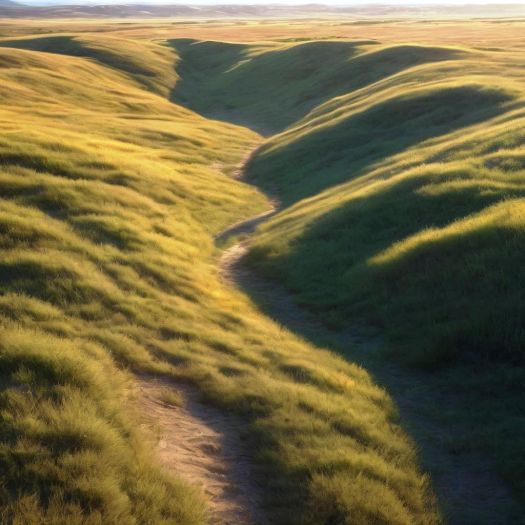Gulley
Gulleys are shallow, elongated depressions, often shaped by erosion or natural water flow, presenting moderate obstacles to the character's passage. They're often encountered in barrens, savanna or steppe ranges. Sometimes called "coolies," they vary in size, though they're usually some ten to twenty yards deep and a few score yards wide. Shaped by the erosive qualities of a stream or small river, they cut their way across flat plateaus or between knobby hillscapes.
Contents
Slopes are made of soil, with earthen or gravelly bottoms, with many patches of low vegetation and scattered trees as these places are replete with both surface and ground water sources. Occasionally the start of a gulley may be a natural spring, which can be sought after by moving up the feature; more often, however, they form merely from the collection of rainfall over a large area, with the upper parts being shaped during storm water. Many gullies, like that shown in the image, are bone dry throughout, especially in barrens environments.
Unlike chasms, specialized equipment like ropes or bridges is often unnecessary for crossing, as adventurers can find paths up and down the sides using natural irregularities. However, travellers should remain cautious of loose soil, potential collapses, or hidden obstacles.
Topography
These features commonly define the open, grassy landscapes of the steppelands and savannas, serving as drainage channels or natural dividers within the terrain. As they widen towards the plains they ultimately open upon, gulleys shape agricultural settlements, which are are strategically placed near gullies for their water resources or upon the ford crossing a river. Good grass grows on the lower slopes and bottom lands, so that wide gullies are ideal for livestock grazing.
See Badlands
